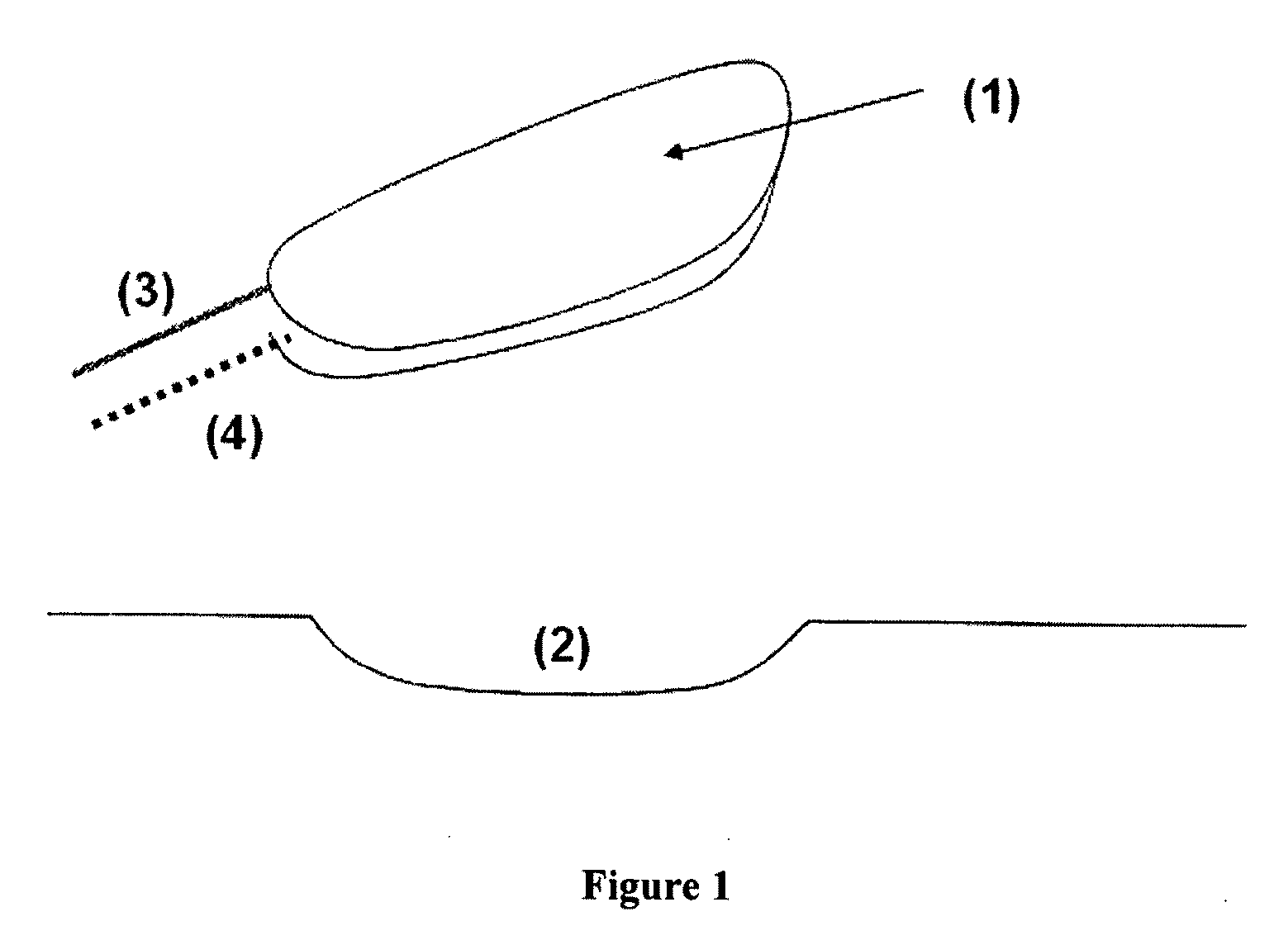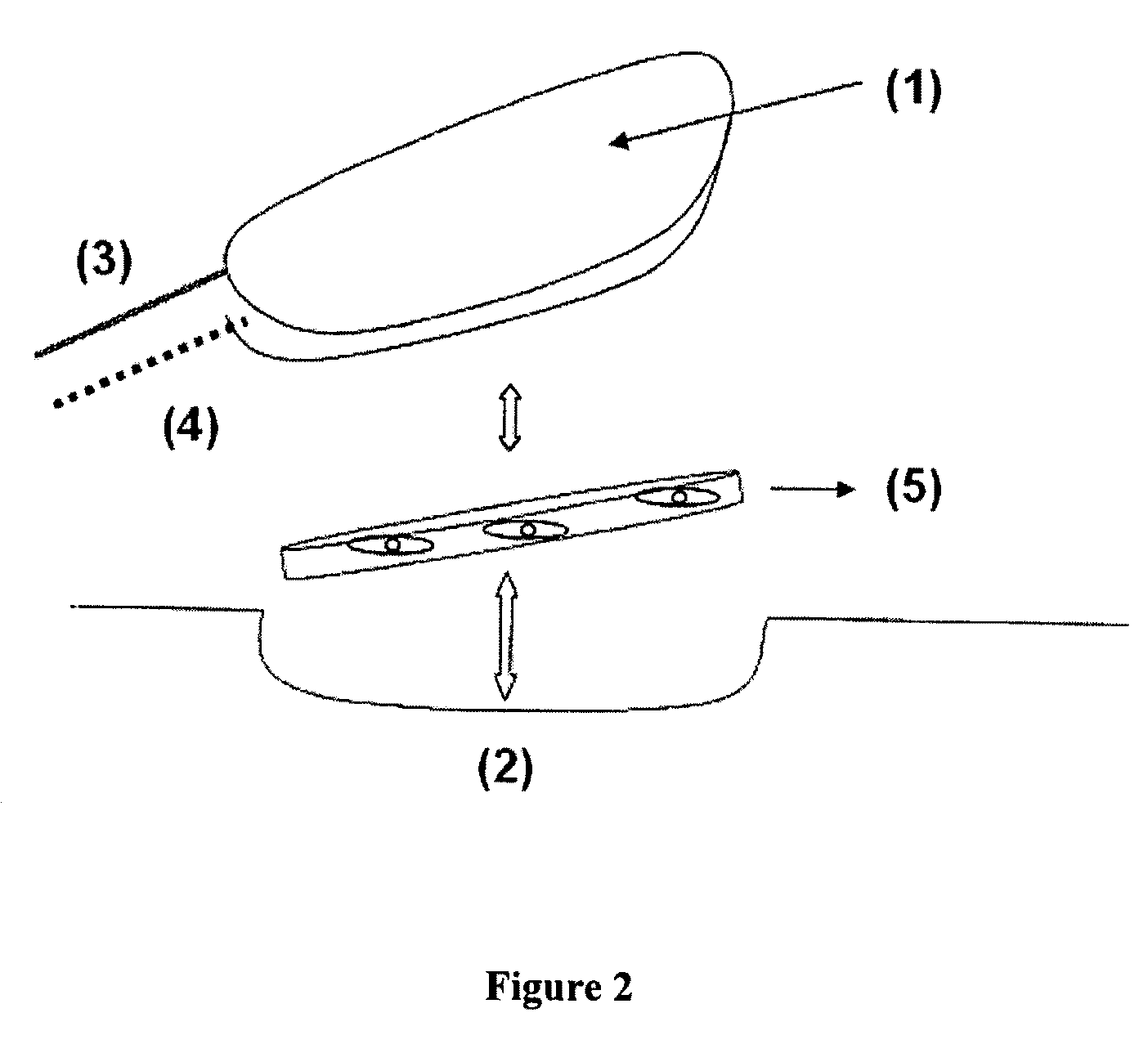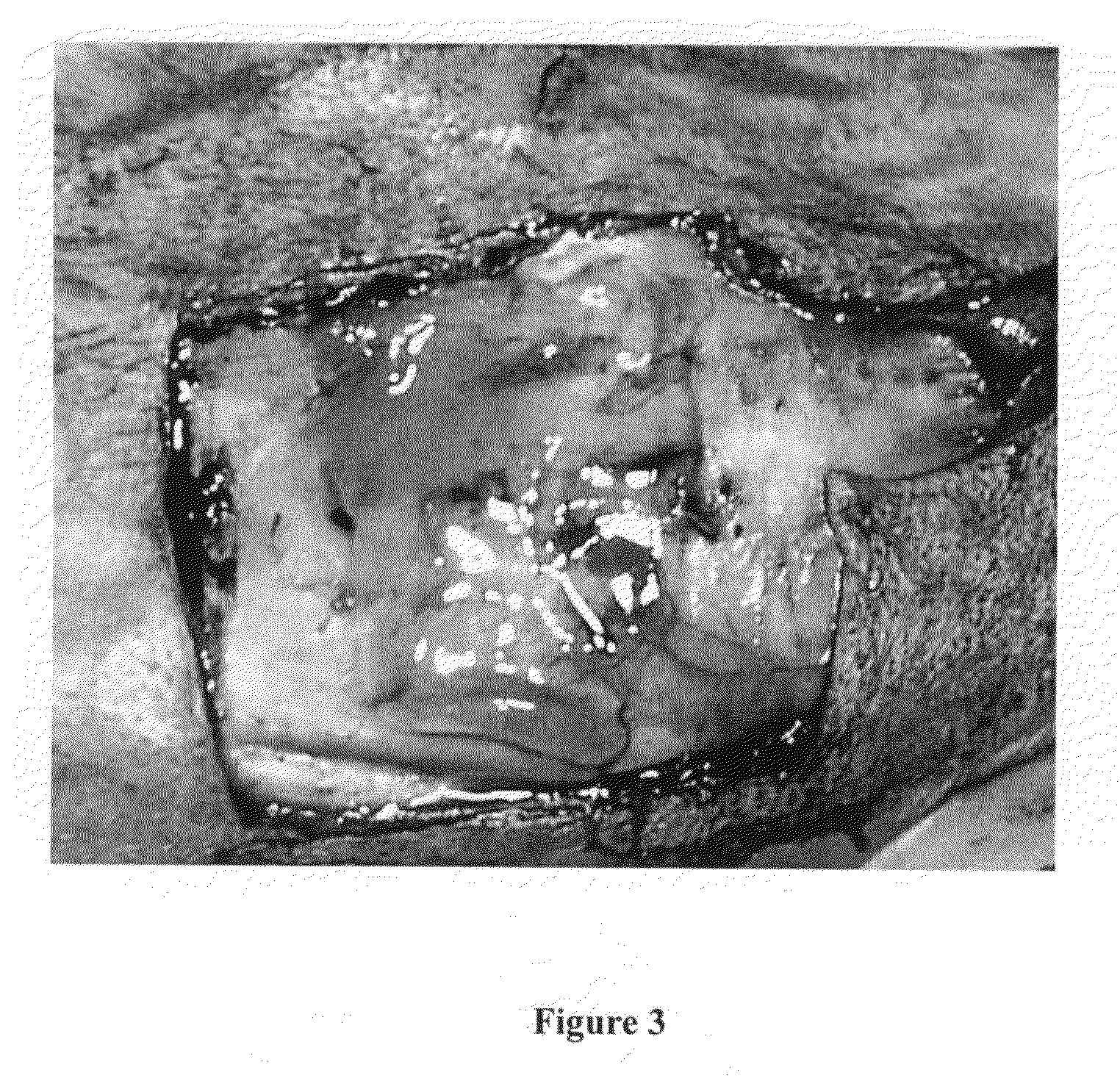Endothelized Artificial Matrix Comprising a Fibrin Gel, Which Is a Superproducer of Proangiogenic Factors
a technology of fibrin gel and artificial matrix, which is applied in the field of artificial matrix, can solve the problems of increasing the morbidity of the process, the risk of necrosis of the same, and the use of growth factors such as recombinant proteins,
- Summary
- Abstract
- Description
- Claims
- Application Information
AI Technical Summary
Benefits of technology
Problems solved by technology
Method used
Image
Examples
example
Preparation of the Endothelial Cells
[0059]The endothelial cells used to be lodged in the fibrin matrix were endothelial cells from the aorta of New Zealand albino rabbits. These same cells were cultivated after extracting them from the aortic artery of these rabbits under sterile conditions and in a culture medium (5% DMEM, with an antibiotic and anti-fungicide). The cells were cultured in a medium modified by Dulbecco: Ham's F12 (1:1), which contains 10% FCS, supplemented with glutamax 1, 100 IU / ml penicillin G, 100 μg / ml of streptomycin and 0.25 μg / ml amphotericin B.
[0060]In the study, cells were used that had been subjected to three steps at the most during their culture. The in vitro genetic transfer was performed in confluent cultures, by incubation for 3 hours at 37° C. with a Group C adenoviral vector, which included a gene of VEGF A 165, capable of being expressed in endothelial cells in a serum-poor medium. After two washes with PBS, the cells were incubated in a growth med...
PUM
| Property | Measurement | Unit |
|---|---|---|
| diameter | aaaaa | aaaaa |
| half life | aaaaa | aaaaa |
| time | aaaaa | aaaaa |
Abstract
Description
Claims
Application Information
 Login to View More
Login to View More - R&D
- Intellectual Property
- Life Sciences
- Materials
- Tech Scout
- Unparalleled Data Quality
- Higher Quality Content
- 60% Fewer Hallucinations
Browse by: Latest US Patents, China's latest patents, Technical Efficacy Thesaurus, Application Domain, Technology Topic, Popular Technical Reports.
© 2025 PatSnap. All rights reserved.Legal|Privacy policy|Modern Slavery Act Transparency Statement|Sitemap|About US| Contact US: help@patsnap.com



